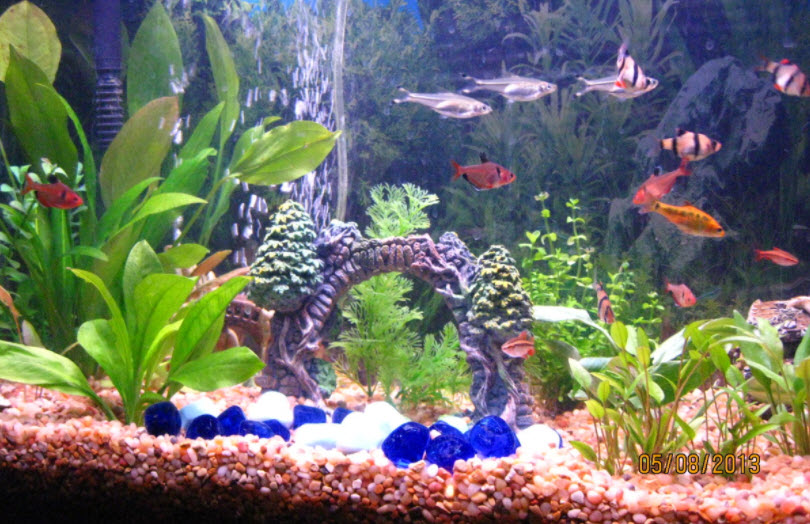
Beginner Fish
As for the selection of fish for a beginner, some fish are quite accepting of the mistakes we all make as beginners to the hobby. These fish are:
- All types of Glofish (Kids love them)
- Platy
- Endler Livebearer
- Red Eye*, Black Phantom*, Black Neon* and Black Tetras*
- Harlequin Rasbora*
- White Cloud Mountain Minnow
- Betta (alone in the tank)
- Corydoras*
- All types of barbs*
- Various Danios*
- Swordtail
- Gouramis (other than the dwarf gouramis)
- Siamese algae eater (not the Chinese algae eater)
- Bristlenose Pleco
- Common and comet goldfish (not fat bodied goldfish)
*Schooling fish
All these fish will do well in any water from 6.5 to 8.5 pH and 65 to 85 degrees Fahrenheit (18 to 29 degrees Celsius). They will all co-exist with each other save for the fact that goldfish will eat minnows and other small fish. Also, the glofish sharks tend to be aggressive and get large. If your tank is less than 15 gallons, I recommend only one species in a tank.
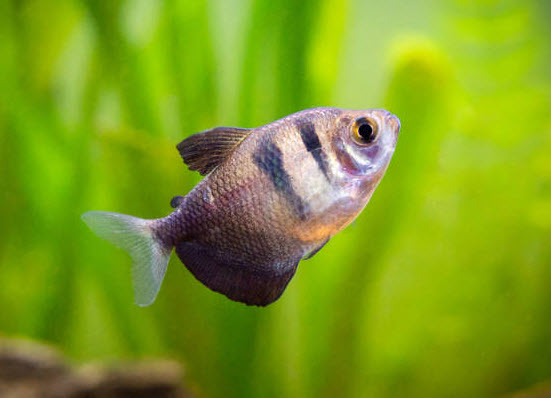
Schooling fish MUST be in schools of at least six and preferably ten fish. This is not to keep them “happy”. This requirement is because, in an aquarium with other fish species, these fish CAN become very aggressive if not in a school. The aggression is defensive in nature. Schooling fish literally become “scared” and lash out if not in a decent sized school.
Groups of two or three fish of species like tiger barbs, serpae tetras, black phantom tetras, zebra danios, and most glofish (bettas and sharks being the exceptions) have become killers in SOME aquariums. Sometimes these fish have killed much larger fish like angelfish if they are not in a decent-sized school. So a school is a requirement.
Note that neons, cardinals, and rummy noses are NOT easy fish. Also, note guppy and mollies are not on this list. The highly inbred fancy guppies are very difficult fish for some. Especially the males seem to be very short-lived. But many beginners are successful with them. Mollies are similar. Different guppy and molly strains are inbred to different degrees and thus the huge variation in viability. More about guppies and mollies in this link:
17.6 Guppies and Other Livebearers
.
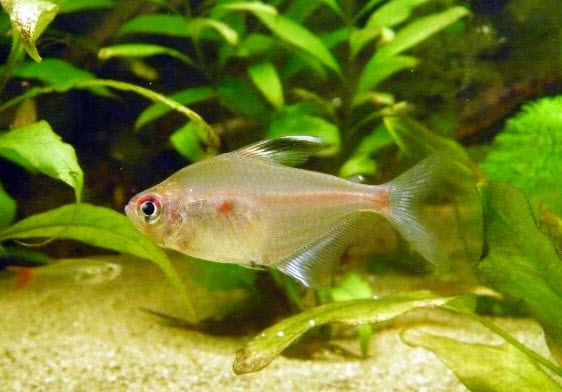
Also, note that 50% to 75% of the various dwarf gouramis have a virus that kills them at 8 to 12 months of age, so avoid dwarf gouramis (the honey gourami is small but it is not a dwarf gourami and does not get dwarf gourami disease).
Probably the most common fish that beginners start with is the Goldfish. The goldfish has a huge number of “fish police” that absolutely demand you have at least 30 gallons of aquarium for every goldfish. This is ONLY their OPINION. There is no scientific basis for the claim.
My OPINION is that goldfish are just fine in a small aquarium. The five longest living goldfish ever recorded were all in small five to ten gallon tanks and were obviously “thriving”. If you want the truth about keeping goldfish go to this link:
17.5. Goldfish
.
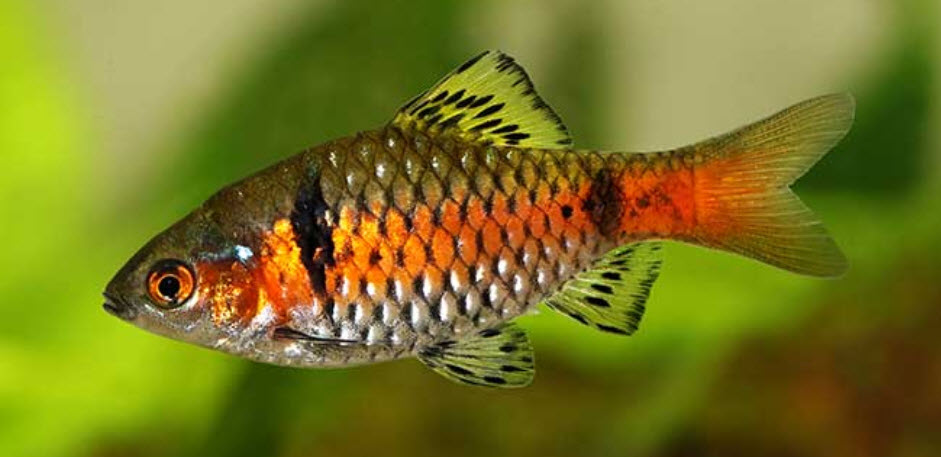
A fish that has had a lot of propaganda spewed about the size of its tank is the betta. The sizing of a tank for bettas also has it cadre of “fish police” who loudly and vociferously proclaim that bettas should never, ever be in less than five gallons. They have a right to their OPINION and I have a right to my OPINION. I’ve seen bettas doing very well in half-gallon tanks. For information on keeping these somewhat unique fish go to this link:
17.7. Aquarium Bettas
.
And a very popular type of tank that many beginners like to do is an African Cichlid aquarium with Lake Malawi Cichlids. This is a link to information on them:
17.4 Lake Malawi Cichlids
.
Another special situation is the stocking of very small two to ten-gallon tanks. This is called a “nano” aquarium and is covered in this link:
17.9. Nano Aquariums
.
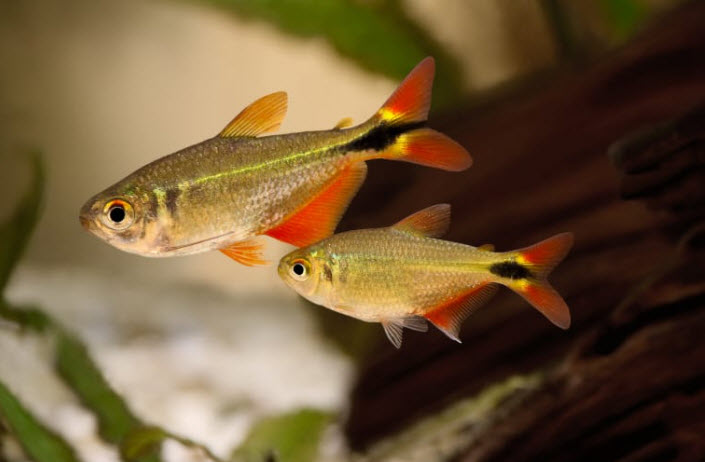
Fish to Avoid
And then there are fish decidedly not recommended for beginners. Topping the list is NEONS. Neons are a “blackwater” fish that needs very bacteria-free, crystal-clear water that one only gets in a tank over four months old which is over-filtered. Similar blackwater fish not recommended for beginners include:
- Ram Cichlids
- Rummy Nose Tetras
- Hatchetfish
- Clown loaches
- Kuhli loaches
- Glass catfish
None of these are beginner fish. They are all from blackwater regions and need special care. More about this on this link to blackwater fish:
17.3. Blackwater Fish
.
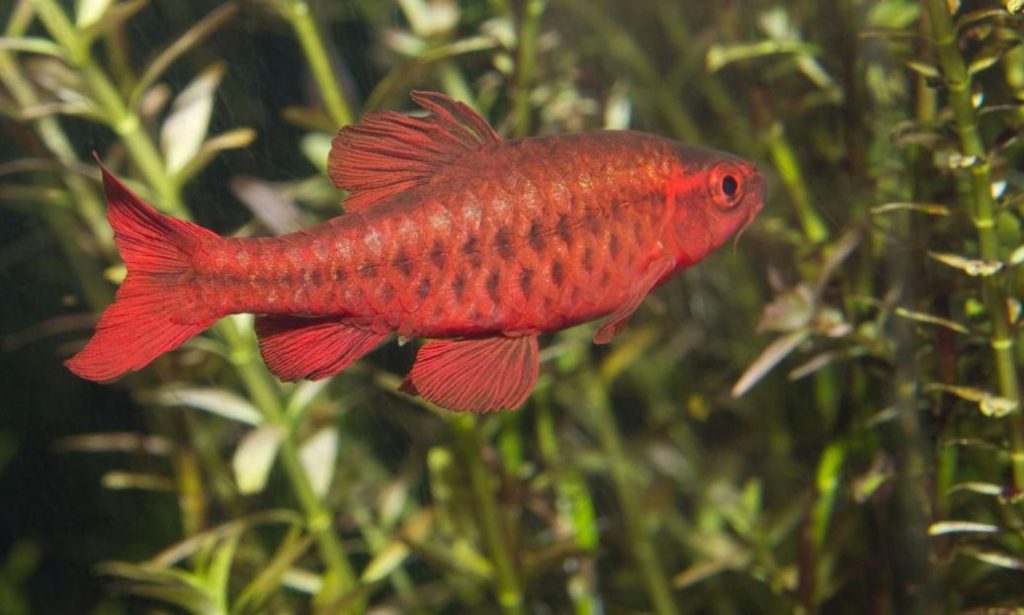
And one type of fish that is much more difficult to keep properly than many hobbyists think is the Oscar. For information on the Oscar go to this link:
17.8. Oscars
A popular pet for a small aquarium is shrimp. Note shrimp need a tank established for at least four months with some algae and/or plants growing in it. They also live only for about one year, so breeding is necessary if you want a lasting tank full. Normally even small fish can eat shrimp fry, so fish are problematic in a shrimp tank. But if the tank has lots of fine plants like Java moss the shrimp will breed undeterred by small fish in the tank. Read this article for the complete lowdown.
17.10. Shrimp
Discus are another popular fish. The key to discus is the water clarity. If you look down the length of the tank, do the fish at the far end look like they are swimming in air? This “crystal clear water” is the key water parameter with discus. To get this you need a ton of very good biofiltration with foam, pot scrubbers or K1 media. For more on this read this article
17.11. Discus
Axolotls are another popular pet. Information on them can be found in this article:
17.12. Axolotls
.
Return to Guidelines for Beginner Menu
.
Aquarium Science Website
The chapters shown below or on the right side in maroon lead to close to 400 articles on all aspects of keeping a freshwater aquarium. These articles have NO links to profit-making sites and are thus unbiased in their recommendations, unlike all the for-profit sites you will find with Google. Bookmark and browse!
.
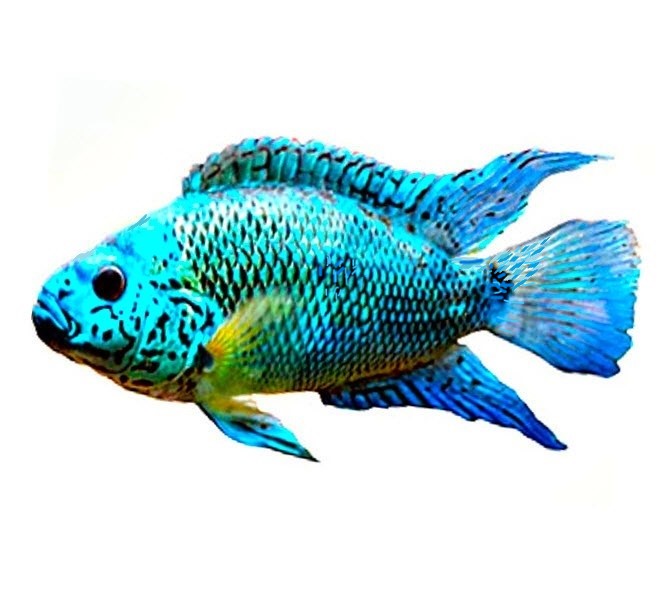
Dave says
In reply to Desiree …. Shrimp need a dGH between 3 and 10 (GH of 55 to 180). A bag of crushed coral in the filter will meet this requirement very nicely and it will also bring up the KH. Note shrimp need a tank established for at least four months with some algae and/or plants growing in it. They also live only for about one year, so breeding is necessary if you want a lasting tank full. Normally even small fish can eat shrimp fry, so fish are problematic in a shrimp tank. But if the tank has lots of fine plants like Java moss the shrimp will breed undeterred by small fish in the tank. Read this article for the complete lowdown. https://aquariumscience.org/index.php/17-10-aquarium-shrimp/
Desiree Roberts says
What about shrimp? I am starting a red cherry tank and I’d love some detailed info about how to start correctly. Love your website ♥️